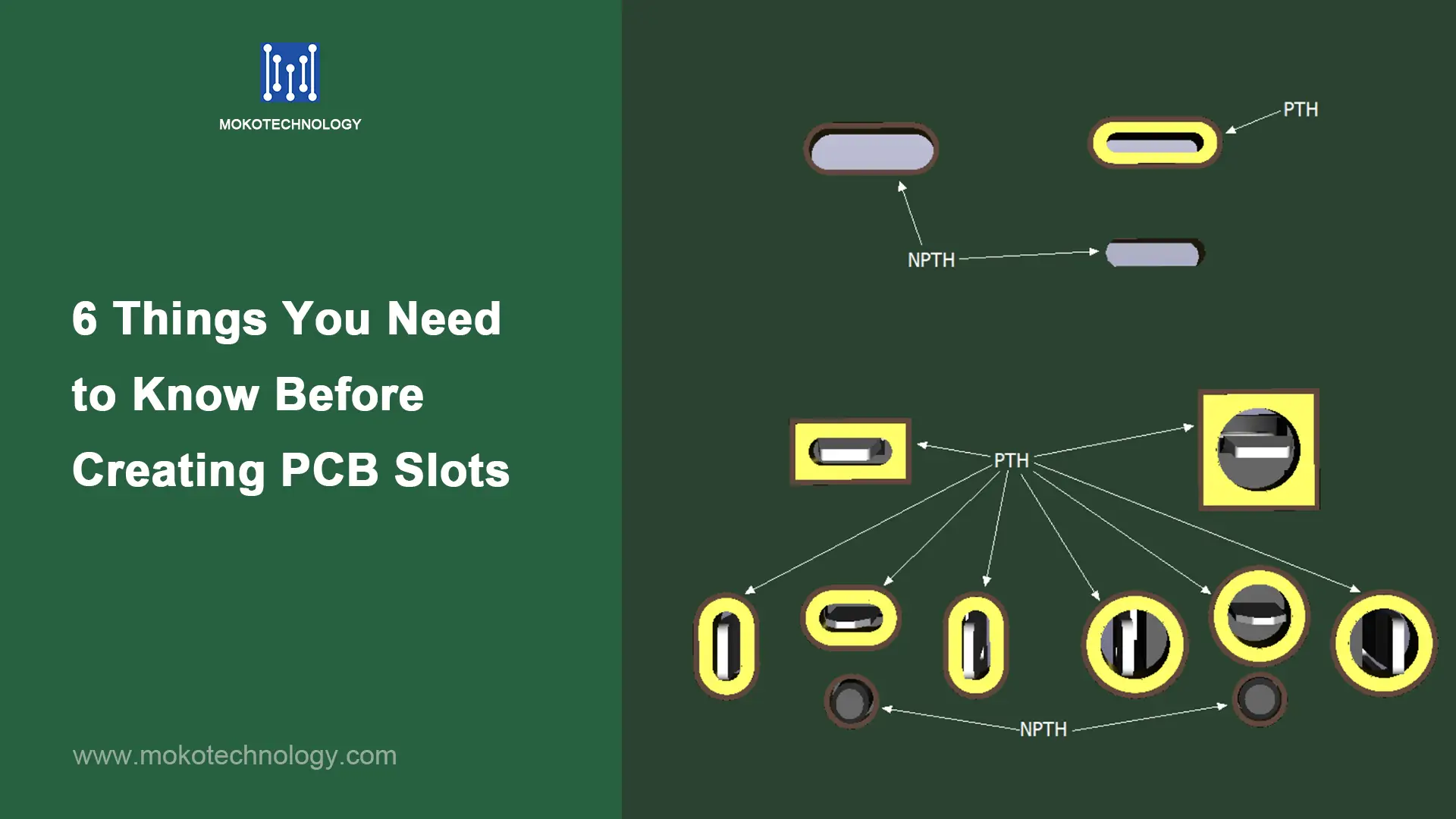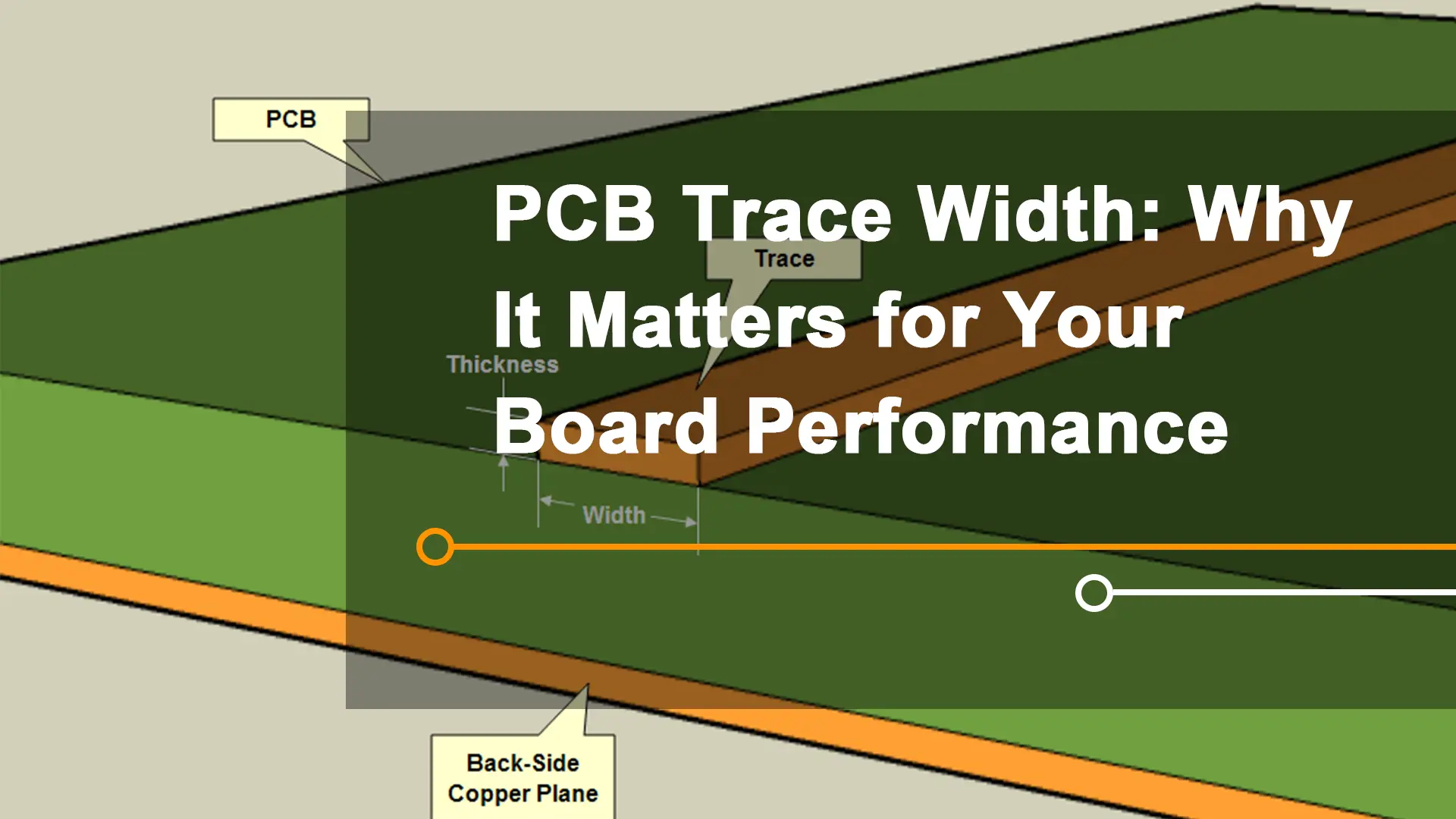This text will introduce PCB slots and clear your confusion about the slot in PCB, such as its classification, function, and design.
What Are PCB Slots?
The slot plays an important role in ensuring the function and effectiveness of PCB. It can not only serve for installing plugins or connectors on printed circuit board but also avoid malfunctioning circuits after long-term operation. In most cases, PCB slots are arranged on the center or at the edge of the board.
What Is the Minimum Slot Size in PCB?
Some people care about slot size, especially in the field of portable and wearable electronics. We suggest a metal slot should not be smaller than 0.45mmX0.90mm for easy manufacturing. And a non-metal slot should not be smaller than 0.80X1.60mm for function fulfillment.
What should not be ignored is that the length of any slot should be above 2 times its width. Otherwise, you may suffer breaking slots or deforming slots during PCB manufacturing.
What Is the Difference Between A Slot and A Cutout on A PCB Board?
We can not say that slot is totally different from cutout, since, actually, slot is a type of cutout. Cutout refers to holes in any shape to serve connectors, conductors and modules on the PCB, while slot is for installing components with rectangular or blade-shaped leads. Also, some slots are used for ensure right operation of the whole circuit.
Types of PCB Slots
According to different functions, we can classify slots into plate-through type and non-plated type, which is also called mental type and non-mental type.
What are the plated-through slots?
We can, firstly, try to understand plated slot. The most popular material plated on the slots is copper, which is a good metal for electrical connections. Secondly, it goes through the whole PCB, so the best identification way is to put PCB before light.
The Advantages of Plated-through Slots
Plate-through slotting is a good solution to installing big rectangular leads. There is less gaps between component lead and board, comparing to solder joint technique.
What are the Non-plated slots?
Non-plated slots, as an isolation of high voltage, is often drilled for preventing PCB creepage. Normally, insulating material of PCB are capable of isolating current between two conductors or between a conductor and the shell of device. However, contamination on PCB or long-term working voltage carried by conductors leads to leakage current on the surface of the insulating material. This phenomenon is called creepage, which seriously disturbs normal operation of the whole circuit. By adding non-plated slots, improper leakage current path between conductors is blocked by leaving air isolation.
In order to ensure good PCB manufacturing at a good cost, recommendable width of non-plated slots is above 0.8mm, while the shape or path of non-plated slot totally depends on your circuit design and component organization.
Plated Vs. Non-plated PCB Slots
In brief, if you want good component attachment to PCB, plated slot helps a lot. If you want reliable voltage isolation between conductors, non-plated is a good choice. In addition to different function, their manufacturing way is various. You can ask for more details if interested.
How to Define Plated and Non-plated Slots in PCB design
Take Altium Designer for example, basic steps of define non-plated slot is as follows.
- Click into Mechanical 1 layer
- Draw non-plate slot path
- Select the path
- Click Tool>Convert>Select the board cutting slot from the selected element
But, sometime, there still be accident. Some people find that the slots disappear when they define it on the PCB by Allegro and saved it as Gerber file. In this case, it is likely that the designer forget to click both NC Drill and NC Route under the Manufacture button on the bar. Or, the designer forget to remove the tick of Lock Primitives and Keepout. Luckily, some sophisticated OEM factory may detect slot mistake based on their experience, but it is better to keep careful to the design file and maintain good communication to PCB factory in case of any unnecessary cost.
How do I create a PCB slot?
Creating PCB slotting usually serves as connector sockets, card slots, mechanical fixing points, and gear positions. There are mainly four way to create a slot.
- V-Cut slotting: This approach allows the board to be easily bent and separated by etching or milling V-shaped slots on the board. It is often used in batch PCB maufacturing line with V-Cut tool.
- Milling slotting: For some special requirements of the slotting design, CNC milling machines is useful to slot on PCB, no matter your slot path is straight line, curve, and even arc.
- Drilling and grooving: It is suitable for DIY. You can punch holes and overlap them by repeating drill to achieve your expected slot path.
- Laser grooving: Laser cutting technology offer higher accuracy and flexibility in handling slot in special shape, but it may not be suitable for mass production.
What Are the Applications of Non-plated and Plated Slots?
Non-plated slots are widely applied in battery circuit, lighting device, IT device and household appliance. Plated slots is always applied in PCB with blade-style connectors, space-saving PCB and PCB with pin-components.



